-
Expert Lincoln Service in Abu Dhabi: Ensuring Top-Notch Care for Your Luxury Vehicle
Owning a Lincoln vehicle is a statement of sophistication and luxury. To maintain its impeccable performance and style, regular servicing is crucial. In Abu Dhabi, the demand for professional Lincoln service is on the rise as more car owners seek reliable care for their vehicles. This blog explores key aspects of Lincoln service in Abu Dhabi and why it matters for your car's long-term health.
Why Regular Lincoln Servicing Is Essential
- Maintains Performance: Routine maintenance ensures your Lincoln delivers the smooth and powerful performance it’s designed for.
- Prolongs Lifespan: Proper care helps your vehicle avoid premature wear and costly repairs.
- Preserves Value: A well-maintained Lincoln retains its resale value, which is essential if you plan to sell it in the future.
- Enhances Safety: Comprehensive servicing keeps essential components like brakes, suspension, and engine in top condition, ensuring safe driving.
What to Expect from a Lincoln Service in Abu Dhabi
Professional Lincoln service centers in Abu Dhabi provide a wide range of services tailored to the specific needs of your vehicle. Here are some key services to look for:
- Comprehensive Diagnostics: Modern diagnostic tools are used to detect and address potential issues before they escalate.
- Oil Change and Fluid Checks: Regular oil changes and fluid level checks are crucial to keep your engine running smoothly.
- Brake and Suspension Maintenance: Ensuring your brakes and suspension are in peak condition is vital for safe and comfortable driving.
- Tire Inspection and Rotation: Proper tire care improves fuel efficiency, handling, and overall safety.
- Battery and Electrical System Checks: Regular testing ensures your battery and electrical components function without a hitch.
Choosing the Right Service Provider
When it comes to Lincoln servicing in Abu Dhabi, selecting a trusted and professional provider is essential. Here’s what to consider:
- Certified Technicians: Look for a service center with experienced and certified technicians who understand Lincoln vehicles inside out.
- Genuine Parts: Always ensure the use of genuine Lincoln parts for replacements to maintain quality and reliability.
- Transparent Pricing: A trustworthy service provider will offer clear pricing without hidden charges.
- Convenience: Opt for a center that offers convenient booking options, pick-and-drop services, or mobile servicing solutions.
Why Service My Car is the Perfect Choice for Lincoln Owners
Service My Car is a leading name in Abu Dhabi, known for its expertise in handling luxury vehicles like Lincoln. With a team of skilled technicians, state-of-the-art equipment, and a commitment to excellence, they provide unparalleled service. Whether it's a routine maintenance check or a major repair, you can trust them to keep your Lincoln in pristine condition.
Conclusion
Investing in professional Lincoln Service Abu Dhabi is crucial for maintaining your car's performance, safety, and value. From regular maintenance to expert diagnostics, choosing the right service center can make all the difference. With a trusted provider like Service My Car, you can enjoy peace of mind knowing your luxury vehicle is in capable hands. Prioritize your Lincoln's care today and ensure it remains a source of pride for years to come.
-
Comprehensive Land Rover Diagnostics and Essential Repairs in Abu Dhabi

Owning a Land Rover in Abu Dhabi comes with the benefit of driving a luxury vehicle that boasts unparalleled performance and durability. However, like all high-performance vehicles, Land Rovers require meticulous care and regular diagnostics to maintain their top-notch functionality. For reliable and expert services, Service My Car stands as a trusted provider for all your vehicle maintenance and repair needs.Why Are Regular Diagnostics Important for Your Land Rover?
Regular diagnostics are essential for identifying potential issues before they escalate into more serious, costly repairs. The complexity of Land Rover models demands specialized diagnostic equipment and skilled technicians who understand the intricacies of these vehicles. At Service My Car, the use of advanced diagnostic tools ensures that every component of your Land Rover is thoroughly checked and maintained.
Common Land Rover Issues Addressed by Diagnostics
1. Engine Troubles: Early detection of engine problems can prevent significant damage. Regular diagnostic checks allow for the identification of minor engine issues, ensuring smooth vehicle operation.
2. Electrical System Faults: The modern Land Rover is packed with intricate electrical systems. Diagnosing potential faults can prevent common issues such as battery drain or malfunctioning sensors.
3. Suspension Problems: Land Rover's sophisticated suspension system provides an unparalleled driving experience, especially in the rugged terrain of Abu Dhabi. However, if the suspension starts showing signs of wear, it’s essential to address it immediately to maintain performance. This is where Service My Car comes into play with its expert Land Rover Suspension Repair in Abu Dhabi.Essential Repairs Beyond Diagnostics
1. Land Rover Alternator Replacement in Abu Dhabi: A failing alternator can lead to battery issues and electrical malfunctions. Service My Car offers comprehensive alternator replacement services to ensure your Land Rover continues to run efficiently without unexpected power losses.
2. Suspension System Upkeep: The suspension system not only affects your comfort but also the safety and stability of the vehicle. If you experience unusual bouncing, noises, or difficulty steering, it’s time to visit Service My Car for expert Land Rover Suspension Repair Abu Dhabi.
3. Detailed Reporting: Post-diagnostics, you will receive a detailed report outlining any issues found, recommended solutions, and cost estimates, ensuring transparency and trust.Why Choose Service My Car for Land Rover Repairs in Abu Dhabi?
State-of-the-Art Diagnostic Tools: Service My Car utilizes the latest diagnostic tools tailored for Land Rover models to provide accurate results.
Expert Technicians: The team is trained to handle the unique engineering of Land Rovers, ensuring that any issue, from Land Rover Alternator Replacement Abu Dhabi to suspension repairs, is handled professionally.
Comprehensive Services: Whether it’s a routine check or an extensive repair job, you can rely on Service My Car to deliver high-quality service.Conclusion
Routine diagnostics are vital for maintaining the health and performance of your Land Rover in Abu Dhabi. They not only prevent unexpected breakdowns but also save on expensive repairs by catching issues early. At Service My Car, you can expect top-tier Land Rover diagnostic services Abu Dhabi, expert Land Rover Alternator Replacement Abu Dhabi, and efficient Land Rover Suspension Repair. Trust the professionals at Service My Car to keep your Land Rover in excellent condition for every journey.
-
10 Tips for Reducing Car Suspension Repair Cost
 Maintaining your car’s suspension system is crucial for both comfort and safety. However, suspension repairs can be costly if not handled properly. The good news is that you can significantly reduce these costs by adopting a proactive approach to car maintenance. Here are 10 tips to help you lower your suspension repair expenses while keeping your vehicle in top condition.
Maintaining your car’s suspension system is crucial for both comfort and safety. However, suspension repairs can be costly if not handled properly. The good news is that you can significantly reduce these costs by adopting a proactive approach to car maintenance. Here are 10 tips to help you lower your suspension repair expenses while keeping your vehicle in top condition.1. Regularly Inspect Your Suspension System

Prevention is always cheaper than repair. Perform routine checks on your suspension system to spot issues early. Look out for signs of wear such as uneven tire wear, excessive bouncing, or pulling to one side. Early detection of minor problems can prevent expensive repairs later.
2. Check and Rotate Tires Frequently

Worn-out or uneven tires can put added strain on your suspension. Regular tire rotation ensures even wear, helping to balance the vehicle’s load more efficiently. This reduces the stress on suspension components like shocks and struts, extending their lifespan and reducing the need for replacement.
3. Avoid Overloading Your Vehicle

Suspension systems are designed to handle a specific weight capacity. Constant overloading stresses the springs, shocks, and struts, causing them to wear out faster. By adhering to your vehicle’s load capacity, you prevent premature damage to the suspension and avoid hefty repair bills.
4. Drive Carefully Over Bumps and Potholes

Rough driving habits, like speeding over potholes or bumps, can accelerate suspension wear and tear. Potholes can damage suspension components such as control arms, springs, and shocks. Slow down when driving over uneven surfaces, and where possible, avoid potholes to minimize damage.
5. Replace Worn-Out Suspension Parts Promptly

If you notice worn suspension components, don’t delay their replacement. Worn parts like ball joints, bushings, or shocks can cause damage to other parts of the suspension system if not addressed quickly. Replacing one part promptly is far less expensive than dealing with a complete system overhaul.
6. Use Quality Suspension Parts

While cheaper parts may seem appealing, they often wear out faster, leading to more frequent repairs. Investing in high-quality, durable suspension components may cost more upfront but will save you money in the long run by lasting longer and providing better performance.
7. Keep Your Suspension Clean

Dirt, mud, and debris can build up around suspension parts, causing them to corrode and deteriorate faster. Make it a habit to clean your car’s undercarriage, especially after driving through rough terrain. This will help keep your suspension components in good condition and prolong their lifespan.
8. Maintain Proper Wheel Alignment

Misaligned wheels can place uneven pressure on your suspension, leading to increased wear. Regular wheel alignment checks help ensure that your tires and suspension work together efficiently, reducing strain on suspension components and improving the overall handling of your vehicle.
9. Service Your Suspension System Regularly

Just like other parts of your car, your suspension system requires regular servicing. Scheduling routine checkups with a trusted mechanic will ensure that any potential issues are caught and fixed before they turn into expensive problems. Regular maintenance can also improve your car’s performance and safety.
10. Learn Basic DIY Suspension Maintenance
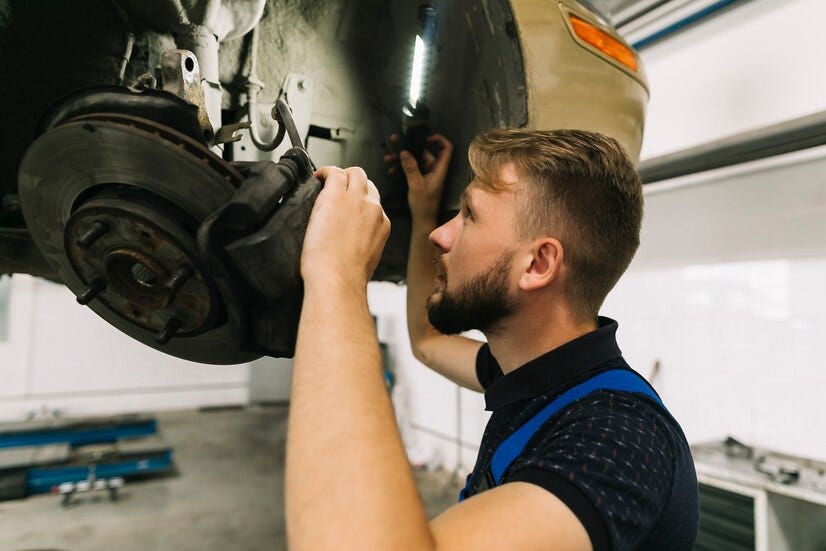
While you should leave major repairs to professionals, learning basic suspension maintenance can save you money. For example, you can check for loose bolts, worn bushings, and signs of leakage from shock absorbers yourself. By handling these small tasks, you can prevent bigger problems and reduce repair costs.
How Service My Car Assist You?
Need reliable support when you're on the road? With infiniti roadside assistance, you get prompt and professional help whenever you need it. Whether you're dealing with a flat tire, dead battery, or any unexpected issue, our expert team is just a call away. Don’t let roadside troubles ruin your day—choose Service My Car for exceptional Infiniti Roadside Assistance and get back on track swiftly and safely. Trust us to keep your journey smooth and worry-free!
Conclusion
Suspension repairs don’t have to break the bank if you take a proactive approach. By following these tips, you can extend the life of your suspension system, avoid costly repairs, and ensure that your car remains safe and comfortable to drive. Regular inspections, careful driving habits, and prompt repairs are key to reducing your suspension repair costs over time.
-
10 Tips for Reducing Car Suspension Repair Cost

Maintaining your car’s suspension system is crucial for both comfort and safety. However, suspension repairs can be costly if not handled properly. The good news is that you can significantly reduce these costs by adopting a proactive approach to car maintenance. Here are 10 tips to help you lower your suspension repair expenses while keeping your vehicle in top condition.
1. Regularly Inspect Your Suspension System

Prevention is always cheaper than repair. Perform routine checks on your suspension system to spot issues early. Look out for signs of wear such as uneven tire wear, excessive bouncing, or pulling to one side. Early detection of minor problems can prevent expensive repairs later.
2. Check and Rotate Tires Frequently

Worn-out or uneven tires can put added strain on your suspension. Regular tire rotation ensures even wear, helping to balance the vehicle’s load more efficiently. This reduces the stress on suspension components like shocks and struts, extending their lifespan and reducing the need for replacement.
3. Avoid Overloading Your Vehicle

Suspension systems are designed to handle a specific weight capacity. Constant overloading stresses the springs, shocks, and struts, causing them to wear out faster. By adhering to your vehicle’s load capacity, you prevent premature damage to the suspension and avoid hefty repair bills.
4. Drive Carefully Over Bumps and Potholes

Rough driving habits, like speeding over potholes or bumps, can accelerate suspension wear and tear. Potholes can damage suspension components such as control arms, springs, and shocks. Slow down when driving over uneven surfaces, and where possible, avoid potholes to minimize damage.
5. Replace Worn-Out Suspension Parts Promptly

If you notice worn suspension components, don’t delay their replacement. Worn parts like ball joints, bushings, or shocks can cause damage to other parts of the suspension system if not addressed quickly. Replacing one part promptly is far less expensive than dealing with a complete system overhaul.
6. Use Quality Suspension Parts

While cheaper parts may seem appealing, they often wear out faster, leading to more frequent repairs. Investing in high-quality, durable suspension components may cost more upfront but will save you money in the long run by lasting longer and providing better performance.
7. Keep Your Suspension Clean

Dirt, mud, and debris can build up around suspension parts, causing them to corrode and deteriorate faster. Make it a habit to clean your car’s undercarriage, especially after driving through rough terrain. This will help keep your suspension components in good condition and prolong their lifespan.
8. Maintain Proper Wheel Alignment

Misaligned wheels can place uneven pressure on your suspension, leading to increased wear. Regular wheel alignment checks help ensure that your tires and suspension work together efficiently, reducing strain on suspension components and improving the overall handling of your vehicle.
9. Service Your Suspension System Regularly

Just like other parts of your car, your suspension system requires regular servicing. Scheduling routine checkups with a trusted mechanic will ensure that any potential issues are caught and fixed before they turn into expensive problems. Regular maintenance can also improve your car’s performance and safety.
10. Learn Basic DIY Suspension Maintenance

While you should leave major repairs to professionals, learning basic suspension maintenance can save you money. For example, you can check for loose bolts, worn bushings, and signs of leakage from shock absorbers yourself. By handling these small tasks, you can prevent bigger problems and reduce repair costs.
How Service My Car Assist You?
Wondering where to find expert engine head gasket repair? Look no further than Service My Car! Our skilled technicians specialize in repairing engine head gaskets, ensuring your vehicle runs smoothly and efficiently. Don’t let a faulty head gasket disrupt your driving experience—trust Service My Car for professional and reliable repairs. With Service My Car, you can drive with confidence knowing that your engine is in good hands.
Conclusion
Suspension repairs don’t have to break the bank if you take a proactive approach. By following these tips, you can extend the life of your suspension system, avoid costly repairs, and ensure that your car remains safe and comfortable to drive. Regular inspections, careful driving habits, and prompt repairs are key to reducing your suspension repair costs over time.
-
10 Easy Steps to Replacing Your Car Clutch

Replacing a car’s clutch may sound like a daunting task, but with some patience and the right tools, it can be done at home. This guide will walk you through the process in 10 simple steps, ensuring that you can restore smooth operation to your vehicle. While this job is labor-intensive, following the steps below will make it manageable, even for intermediate DIYers.
1. Preparation is Key

Before starting, make sure you have the necessary tools and parts. You will need a car jack, jack stands, a clutch alignment tool, wrenches, and socket sets. Don’t forget to purchase a replacement clutch kit that matches your vehicle model. Also, ensure that you have a safe and level working space.
2. Disconnect the Battery

This is crucial for safety. Disconnect the negative terminal of the battery to avoid any accidental electrical shorts while working. It’s always a good habit to disconnect the battery whenever working on your vehicle, especially around electrical components.
3. Lift the Vehicle

Using your car jack, lift the front of your vehicle and place it securely on jack stands. The clutch is located between the engine and transmission, so you’ll need to access the undercarriage. Double-check that the vehicle is stable before proceeding to the next step.
4. Remove the Transmission
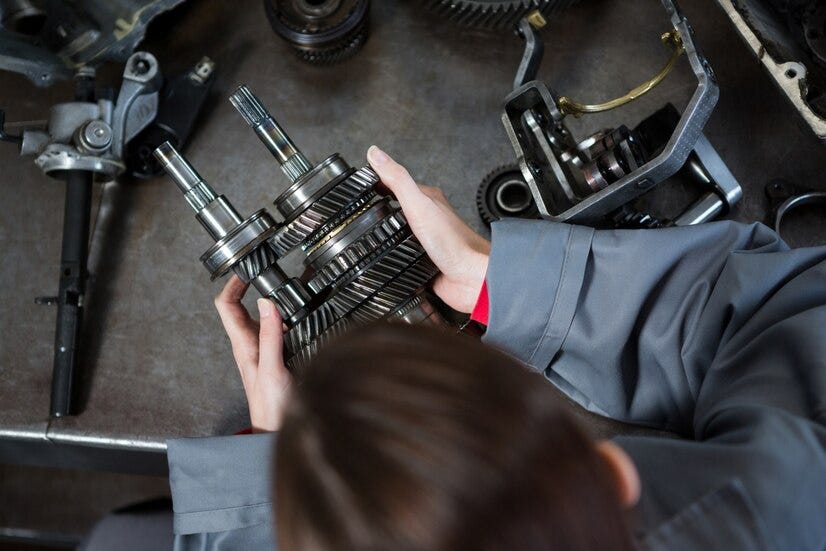
The transmission must be removed to access the clutch. Start by disconnecting any components connected to the transmission, including driveshafts, cables, and linkage. Unbolt the transmission mounts and carefully lower the transmission using a transmission jack or your jack stand. This step may require an extra set of hands due to the weight of the transmission.
5. Access the Clutch Assembly

Once the transmission is out of the way, you will see the clutch assembly mounted to the engine’s flywheel. The clutch assembly consists of a pressure plate, clutch disc, and release bearing. Begin by unbolting the pressure plate from the flywheel. Once this is done, you can remove the clutch disc and release bearing.
6. Inspect the Flywheel

The flywheel is an important part of the clutch system and should be inspected for wear and tear. Look for scoring, cracks, or heat spots. If the flywheel shows any signs of damage, it should be replaced or resurfaced before installing the new clutch.
7. Install the New Clutch

Position the new clutch disc on the flywheel, making sure that it’s aligned properly using a clutch alignment tool. Place the pressure plate over the clutch disc and bolt it onto the flywheel. Tighten the bolts gradually in a crisscross pattern to ensure even pressure. Make sure everything is aligned perfectly before moving to the next step.
8. Replace the Release Bearing

A new clutch kit should include a release bearing, which should be replaced along with the clutch disc and pressure plate. The release bearing is mounted on the transmission input shaft and works in conjunction with the clutch fork. Make sure to properly lubricate the new bearing before installing it.
9. Reinstall the Transmission

With the new clutch in place, it’s time to reinstall the transmission. Carefully lift the transmission back into position and bolt it onto the engine. Reconnect the driveshafts, cables, and linkages that you disconnected earlier. Make sure everything is tight and secure.
10. Test the New Clutch
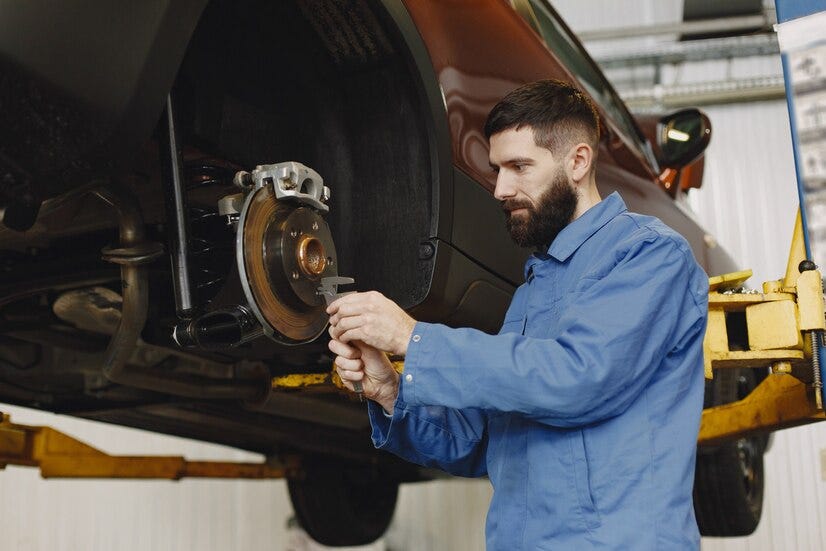
Once everything is reassembled, lower the car from the jack stands and reconnect the battery. Start the vehicle and test the clutch to ensure smooth operation. Make sure the clutch pedal feels right and that gear changes are smooth without any grinding or slippage.
How Service My Car Assist You?
Looking for reliable car recovery dubai? Service My Car has got you covered. Our expert team is dedicated to providing swift and efficient recovery solutions for your vehicle, ensuring you’re back on the road in no time. Whether you’re stranded due to a breakdown or in need of towing assistance, we offer prompt and professional services tailored to your needs. Trust Service My Car for hassle-free recovery solutions in Dubai.
Final Thoughts
While replacing a car clutch can seem intimidating, breaking the process down into simple steps makes it more manageable. This guide gives you a clear path to follow, but always consult your vehicle’s manual for any specific instructions related to your model. If at any point you feel unsure or overwhelmed, don’t hesitate to seek professional assistance. After all, ensuring a properly functioning clutch is essential for a safe and smooth driving experience.
-
A Complete Guide on Car Paint Repair

Your car’s paint job is one of the first things people notice. It’s not just about aesthetics; a good paint job also protects your vehicle from rust, corrosion, and damage caused by the environment. Over time, exposure to sun, road debris, and accidents can lead to scratches, chips, and dullness in the paint. Repairing or refreshing your car’s paint can make it look brand new and extend its lifespan. Here’s a comprehensive guide to car paint repair, covering everything from identifying damage to DIY and professional options.
1. Understanding Different Types of Paint Damage

Before you begin any repairs, it’s crucial to identify the type of damage. Car paint damage can range from minor imperfections to serious issues that expose the car’s metal surface. The most common types include:
-
Scratches: These can occur from keys, tree branches, or accidental contact with other objects. They vary in depth, with some only affecting the clear coat while others penetrate through the color and primer layers.
-
Stone Chips: These are tiny chips in the paint caused by debris or gravel hitting the surface at high speeds. They often appear on the front bumper, hood, or sides of the car.
-
Oxidation: Over time, exposure to UV rays can cause the paint to fade and become chalky. This is called oxidation, which primarily affects the car’s clear coat.
-
Peeling: In cases where the clear coat begins to separate from the paint, you’ll notice peeling or bubbling areas. This typically happens due to improper application or prolonged exposure to harsh weather conditions.
Once you understand the type of damage, you can decide how to approach the repair.
2. DIY Car Paint Repair: When and How to Do It

For minor scratches, chips, and small areas of fading, a DIY approach can be effective and cost-efficient. Here’s a step-by-step guide to fixing common paint issues on your own:
a. Fixing Scratches

-
Assess the depth: If the scratch only affects the clear coat (the top layer), it can usually be buffed out. For deeper scratches that reach the paint or primer, you’ll need touch-up paint.
-
Buff out light scratches: Use a rubbing compound or scratch remover to buff out surface scratches. Apply the product using a microfiber cloth, rubbing gently in circular motions until the scratch fades.
-
Touch-up deeper scratches: For deeper scratches, clean the area with soap and water, then apply touch-up paint that matches your car’s color. Most manufacturers offer small bottles or pens of matching paint.
b. Repairing Stone Chips
-
Clean the area: Remove any dirt or debris from the chip. You can use rubbing alcohol to clean the surface thoroughly.
-
Apply touch-up paint: Use a fine-tipped brush or paint pen to carefully apply touch-up paint. Make sure the paint is a perfect match to your car’s original color.
-
Finish with clear coat: Once the paint dries, apply a thin layer of clear coat to seal the repair and restore shine.
c. Dealing with Oxidation

-
Wash the car thoroughly: Use car soap and water to remove dirt and grime.
-
Polish the surface: After drying the car, use a car polish to restore some shine to the oxidized areas. This process may need to be repeated several times for best results.
-
Wax for protection: Finish by applying a coat of wax to protect the paint from future oxidation and UV damage.
d. Peeling Paint
For peeling paint, it’s best to visit a professional since the entire panel might need to be sanded and repainted.
3. When to Seek Professional Help

While DIY methods can work well for small issues, larger paint damage should be handled by professionals. If your car has large scratches, extensive oxidation, or peeling, a professional body shop will have the tools and expertise to restore your car’s finish.
Reasons to choose professional repair:
-
Color Matching: Professionals use advanced tools to ensure an exact color match with the original paint, which can be challenging for DIY repairs.
-
Quality of Finish: A professional job will result in a smoother, more durable finish that lasts longer.
-
Dealing with Severe Damage: If the damage has penetrated to the metal, the repair requires specialized equipment to sand, prime, and repaint the surface.
4. Prevention Tips for Maintaining Your Car’s Paint

Maintaining your car’s paint isn’t just about repairs—it’s also about prevention. Here are some tips to keep your car’s paint looking new for as long as possible:
-
Regular Washing: Dirt, dust, and road salt can eat away at the paint over time. Wash your car regularly to prevent buildup.
-
Apply Wax: Wax adds an extra layer of protection against UV rays, moisture, and debris. Apply it every few months for best results.
-
Park in Shade: Prolonged exposure to the sun’s UV rays can fade the paint. Whenever possible, park in the shade or use a car cover.
-
Use Paint Protection Films: These clear films protect the paint from minor scratches, chips, and fading, especially on high-impact areas like the front bumper and hood.
How Service My Car Assist You?
Are you searching for a reliable car repair workshop in Dubai? Look no further than Service My Car. With a reputation for excellence, we offer top-notch repair services for all makes and models. Our skilled technicians are dedicated to ensuring your vehicle is back on the road safely and efficiently. From routine maintenance to major repairs, Service My Car has you covered. Trust us to be your go-to car repair workshop in Dubai for all your automotive needs.
Conclusion
Car paint repair doesn’t have to be intimidating. Whether you’re tackling minor chips or dealing with more serious damage, understanding the process can save you time, money, and frustration. For minor repairs, DIY methods can be effective, but for larger damage, seeking professional help ensures a high-quality finish. By keeping up with regular maintenance and taking preventative measures, you can keep your car looking fresh and vibrant for years to come.
-
-
7 Common Causes of Flat Tires and How to Prevent Them

Flat tires are an inconvenience that most drivers will face at some point. Whether it’s during a quick commute or a long road trip, a flat tire can derail your plans and create frustration. However, understanding the common causes of flat tires can help you take preventative measures to avoid them. In this article, we will explore seven frequent reasons for flat tires and what you can do to keep your tires in optimal condition.1. Punctures by Sharp Objects

One of the most common causes of a flat tire is a puncture by sharp objects, such as nails, screws, or glass. These hazards can easily pierce through your tire’s rubber, leading to a slow leak or immediate deflation.Prevention: Regularly inspect your tires for embedded objects and be mindful of where you drive, especially through construction sites or debris-strewn roads. If you spot a nail or similar object lodged in the tire, don’t pull it out immediately; this could worsen the leak. Instead, get the tire checked by a professional.
2. Underinflation

Driving with underinflated tires can lead to uneven wear, which weakens the tire’s structure and increases the risk of a blowout. Tires with low air pressure generate excessive heat, particularly during long drives, which can damage the sidewalls and cause a rupture.Prevention: Use a tire pressure gauge to check the pressure at least once a month or before long trips. Follow your vehicle manufacturer’s recommendations for optimal tire pressure, which can usually be found on a sticker in the driver’s side door frame or in the owner’s manual.
3. Overloading the Vehicle

Carrying more weight than your vehicle’s recommended load capacity can put undue stress on your tires. Overloaded tires are more susceptible to blowouts and excessive wear, as they carry the extra load unevenly.Prevention: Make sure your vehicle’s load capacity, which is typically listed on the same label as tire pressure recommendations, is not exceeded. When moving heavy items, distribute the weight evenly to reduce strain on individual tires.
4. Hitting Potholes or Curbs
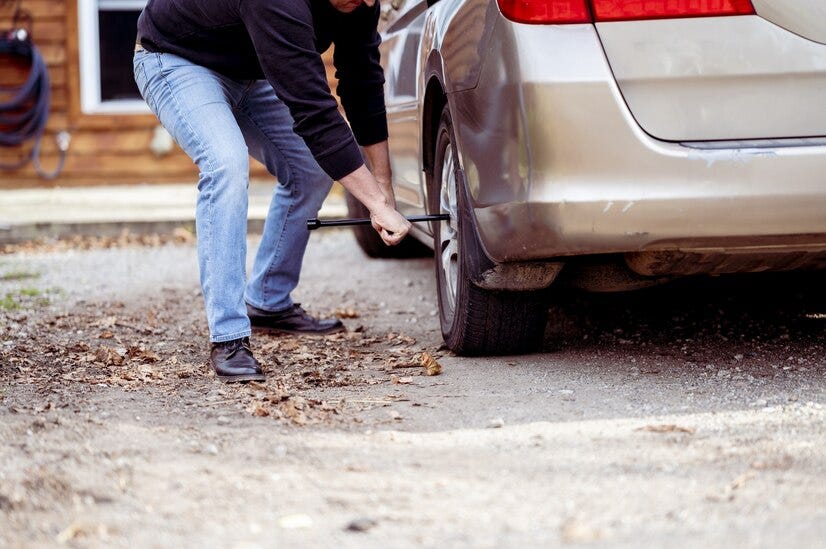
Potholes, curbs, and other road hazards can cause immediate tire damage, especially if hit at high speeds. The impact can lead to a pinch flat, where the tire is compressed between the object and the wheel rim, causing a tear or puncture.Prevention: Be cautious of road conditions and avoid potholes and curbs whenever possible. If you can’t avoid them, try to slow down to minimize the impact. Regularly inspect your tires and rims for any visible damage after hitting an obstacle.
5. Worn Tire Tread

As tires wear down, they become more susceptible to punctures and flats. Bald tires lack sufficient tread to grip the road properly and are more prone to blowouts due to their weakened structure. In wet conditions, they are also more likely to cause hydroplaning.Prevention: Check the tread depth of your tires using the penny test: insert a penny into the tire’s tread with Lincoln’s head facing downward. If you can see the top of Lincoln’s head, it’s time to replace your tires. Rotating your tires regularly can also help ensure even wear, extending their lifespan.
6. Valve Stem Leaks
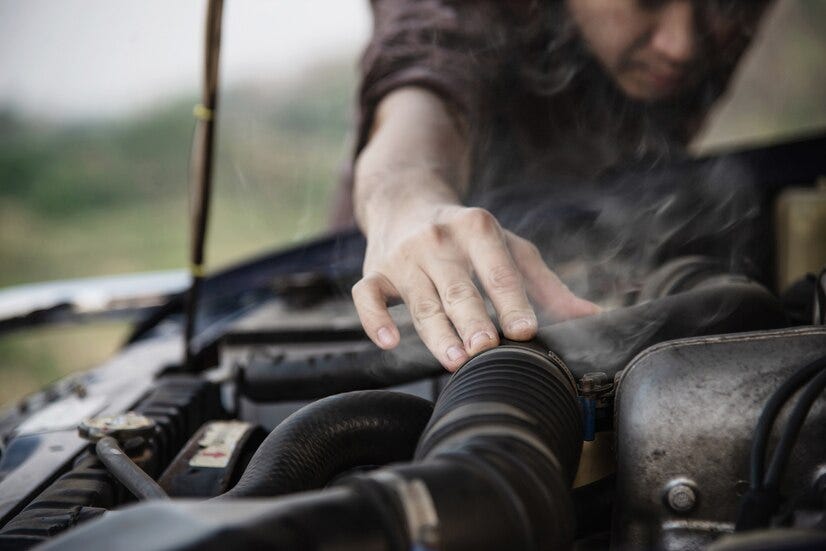
The valve stem, which allows you to inflate the tire, can develop leaks over time due to damage or wear. A faulty valve stem can cause a slow loss of air, leading to a flat tire if not addressed. Dirt, debris, and exposure to the elements can also contribute to valve stem deterioration.Prevention: During regular tire maintenance, ask your mechanic to inspect the valve stems for wear or damage. If you notice air leaking around the valve, have it replaced as soon as possible. A quick visual inspection when inflating your tires can also help detect early signs of leaks.
7. Extreme Temperatures

Fluctuating temperatures can cause your tire pressure to increase or decrease rapidly. In hot weather, the air inside the tire expands, potentially leading to overinflation and a blowout. Conversely, cold weather can cause underinflation, which increases the risk of a flat tire.Prevention: Check your tire pressure more frequently during temperature extremes, especially in the summer and winter months. Tire pressure tends to drop about 1–2 PSI for every 10°F decrease in temperature, so it’s essential to adjust accordingly.
How Service My Car Assist You?
Looking for a reliable nissan garage? At Service My Car, we provide expert care for all Nissan models, from routine maintenance to complex repairs. Our skilled technicians are dedicated to delivering top-notch service, ensuring your Nissan runs smoothly and efficiently. Whether you need a simple oil change or a more extensive repair, Service My Car is here to help. Trust us for all your Nissan garage needs and experience exceptional service and reliability.
Conclusion
Flat tires are an unfortunate but inevitable part of driving. However, by understanding the common causes of flat tires, you can take steps to reduce your risk. Regular tire maintenance, proper inflation, and cautious driving are crucial to extending the life of your tires and avoiding the hassle of a flat. Remember, prevention is key — don’t wait until you’re stranded on the side of the road to think about tire care!
-
Essential Roadside Assistance: Your Ultimate Guide to Staying Safe on the Road

Whether you’re a seasoned driver or someone new to the road, the unexpected can happen at any time. A flat tire, dead battery, or engine trouble can quickly turn a pleasant drive into a stressful situation. This is where roadside assistance comes in — a safety net that every driver should consider essential. In this guide, we’ll explore the importance of roadside assistance, what it typically covers, and how you can stay safe when you’re stranded on the road.Why Roadside Assistance is Essential

Roadside assistance provides peace of mind when you’re on the road. It’s not just about getting help when you need it — it’s about knowing that help is available 24/7, no matter where you are. Whether you’re on a long road trip or just commuting to work, roadside assistance ensures that you’re never truly alone.Imagine you’re driving through a remote area, far from the nearest town, and suddenly your car breaks down. Without roadside assistance, you might be left to figure out how to tow your car or find the nearest mechanic. But with a roadside assistance plan, one call can connect you to a professional who will come to your aid, whether you need a tow, fuel delivery, or even a locksmith.
What Does Roadside Assistance Typically Cover?

While the specifics can vary depending on your provider and plan, most roadside assistance packages cover a range of common emergencies:1. Towing Services: If your car breaks down and can’t be fixed on the spot, a tow truck will be dispatched to take your vehicle to the nearest repair shop. This can save you from the hefty fees that towing companies often charge, especially if you’re far from a populated area.
2. Battery Jump-Starts: A dead battery is one of the most common reasons for roadside assistance calls. Whether it’s due to cold weather, leaving your lights on, or just an old battery, a quick jump-start can get you back on the road.
3. Flat Tire Changes: Not everyone knows how to change a tire, and even if you do, it can be dangerous on a busy highway. Roadside assistance will send someone to safely change your tire for you.
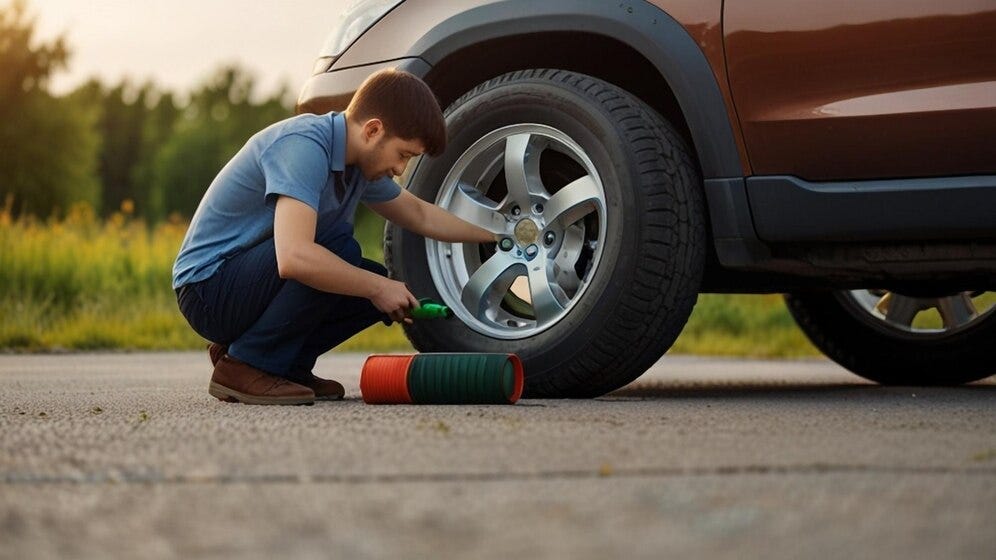
4. Lockout Services: It’s easy to accidentally lock your keys in your car. Roadside assistance can help you regain access without damaging your vehicle.5. Fuel Delivery: Running out of gas happens to the best of us. If you find yourself stranded with an empty tank, roadside assistance will deliver enough fuel to get you to the nearest gas station.
6. Minor Mechanical Repairs: In some cases, a technician might be able to perform a quick fix on-site, saving you the time and hassle of towing your car to a repair shop.
Staying Safe While Waiting for Assistance

Even with the security of roadside assistance, it’s important to prioritize your safety while waiting for help to arrive. Here are some tips to keep in mind:1. Pull Over Safely: If your car is still operable, try to pull over to a safe location, such as a rest area or the shoulder of the road. Make sure your vehicle is as far off the road as possible to avoid being hit by passing traffic.
2. Turn on Your Hazard Lights: This alerts other drivers to your presence and helps ensure that you and your vehicle are visible, especially in low-light conditions.

3. Stay Inside Your Vehicle: Unless it’s safer to be outside (e.g., your car is smoking or there’s a risk of fire), it’s usually best to stay inside your vehicle with your seatbelt on. If you need to exit, do so from the passenger side, away from traffic.4. Use Reflective Markers: If you have them, set out reflective triangles or flares behind your vehicle to further increase your visibility to other drivers.
5. Keep Your Phone Charged: A fully charged phone is your lifeline in an emergency. Keep a car charger handy, and consider carrying a portable power bank as a backup.
Choosing the Right Roadside Assistance Plan

When selecting a roadside assistance plan, consider your driving habits, the age of your vehicle, and how much you travel. Some plans are bundled with auto insurance policies, while others are offered by car manufacturers, credit card companies, or third-party providers.Look for a plan that offers nationwide coverage, 24/7 service, and a good reputation for quick response times. It’s also wise to compare what different plans cover and any limitations they might have, such as the number of service calls allowed per year or the maximum towing distance.
How Service My Car Assist You?
Looking for a quick fix for a flat tire in Dubai? Service My Car has got you covered! Our efficient team is equipped to handle any tyre emergency, providing swift assistance wherever you are in the city. Don’t let a flat tyre derail your plans – trust Service My Car to get you back on the road in no time. With our reliable service, you can rest assured knowing that your journey won’t be delayed for long.
Conclusion
Roadside assistance is more than just an add-on to your insurance policy — it’s a crucial part of staying safe on the road. By understanding what your roadside assistance plan covers and how to stay safe while waiting for help, you can drive with confidence, knowing that you’re prepared for whatever the road throws your way.
-
Step-by-Step Guide to Brake Pads Replacement

Brake pads are one of the most critical components in your vehicle’s braking system. Over time, they wear down and need to be replaced to ensure your car stops safely. While this might seem like a job for a professional mechanic, it’s actually something you can do yourself with the right tools and knowledge. This step-by-step guide will walk you through the process of replacing your brake pads, saving you money and giving you a better understanding of your vehicle’s maintenance needs.Tools and Materials You’ll Need:
Before you begin, gather the following tools and materials:
- New brake pads (specific to your vehicle’s make and model)
- Jack and jack stands
- Lug wrench
- C-clamp or brake caliper tool
- Socket and ratchet set
- Torque wrench
- Brake cleaner
- Gloves and safety glasses
- Wheel chocks
Having the right tools on hand is essential for a smooth process. Double-check that the brake pads you’ve purchased match your vehicle to avoid any issues during installation.
Step 1: Prepare Your Vehicle

Start by ensuring your car is in a safe position. Park on a flat, level surface and engage the parking brake to prevent the vehicle from rolling. Place wheel chocks behind the rear wheels for added security.Next, use a lug wrench to slightly loosen the lug nuts on the wheels where you’ll be replacing the brake pads. Don’t remove them entirely just yet — loosening them now will make it easier to remove the wheel once the car is lifted.
With the lug nuts loosened, it’s time to lift your vehicle. Position the jack under the car’s designated jack points (refer to your owner’s manual if you’re unsure where these are) and raise the car until the wheel is off the ground. Once lifted, place jack stands under the car to securely support it. Lower the car onto the jack stands, ensuring it’s stable before moving forward.
Safety Tip:
Never rely solely on a jack to support your vehicle while working underneath it. Always use jack stands for added safety.
Step 2: Remove the Wheel

With the car securely lifted, finish removing the loosened lug nuts and take off the wheel. Set the wheel aside in a safe place, as you’ll need to reinstall it later. Removing the wheel exposes the brake caliper and rotor, giving you access to the brake pads.Step 3: Remove the Brake Caliper

The brake caliper is the component that houses the brake pads. To access the pads, you’ll need to remove the caliper. Locate the caliper bolts on the back of the caliper. Using a socket and ratchet, carefully remove these bolts.Once the bolts are removed, gently slide the caliper off the rotor. Be careful not to let the caliper hang by the brake line, as this can cause damage. Instead, use a bungee cord to hang the caliper from the suspension, or rest it on a nearby surface.
Pro Tip:
Before removing the old brake pads, take a moment to observe their positioning. This will help when it’s time to install the new pads.
Step 4: Remove Old Brake Pads

With the caliper removed, you can now slide the old brake pads out of the caliper bracket. Take a moment to inspect them for wear. If the pads are worn unevenly, this could indicate issues with your brake system that may need attention beyond just replacing the pads.Step 5: Compress the Caliper Piston

Before you can install the new brake pads, you’ll need to compress the caliper piston. This is necessary because the new pads are thicker than the worn-out ones, and the piston needs to be retracted to make space.Use a C-clamp or a brake caliper tool to slowly compress the piston back into the caliper. Be sure to go slowly and carefully to avoid damaging the caliper. This step is crucial for ensuring that the new pads will fit correctly and function properly.
After compressing the piston, it’s a good idea to spray the caliper with brake cleaner to remove any dirt or debris.
Step 6: Install New Brake Pads

Now it’s time to install the new brake pads. Slide them into the caliper bracket, making sure they’re properly aligned and seated. Once the new pads are in place, reposition the brake caliper over the rotor and pads.Reinstall the caliper bolts, tightening them securely. If you have a torque wrench, use it to tighten the bolts to the manufacturer’s recommended torque specifications. This ensures that the caliper is properly secured.
Step 7: Reinstall the Wheel

With the new brake pads in place and the caliper securely reinstalled, it’s time to put the wheel back on. Align the wheel with the hub and hand-tighten the lug nuts to hold it in place.Use the jack to lift the vehicle slightly, just enough to remove the jack stands. Carefully lower the car back to the ground. Once the car is fully lowered, use a torque wrench to fully tighten the lug nuts in a crisscross pattern. This ensures even pressure and proper wheel alignment.
Step 8: Test the Brakes

Before hitting the road, it’s crucial to test the brakes. Start by pumping the brake pedal a few times while the car is still stationary. This helps seat the new pads against the rotor.Next, take your car for a short test drive in a safe area. Listen for any unusual noises and ensure that the brakes feel firm and responsive. If everything checks out, you’ve successfully replaced your brake pads!
How Service My Car Assist You?
Looking to restore clarity to your vehicle’s view? Service My Car offers expert windscreen repair dubai, ensuring your safety on the road. With our skilled technicians and top-notch equipment, we fix chips, cracks, and scratches promptly and effectively. Say goodbye to obscured vision and hello to crystal-clear driving experience. Trust Service My Car for reliable windscreen repair services that keep you driving safely through the bustling streets of Dubai.
Conclusion
Replacing your brake pads is a task that, with a little patience and the right tools, you can accomplish yourself. Not only does it save you money, but it also gives you the satisfaction of maintaining your vehicle. Remember to always prioritize safety and follow the steps carefully.
-
The Importance of Regular Car Oil Changes: A Guide for Vehicle Maintenance
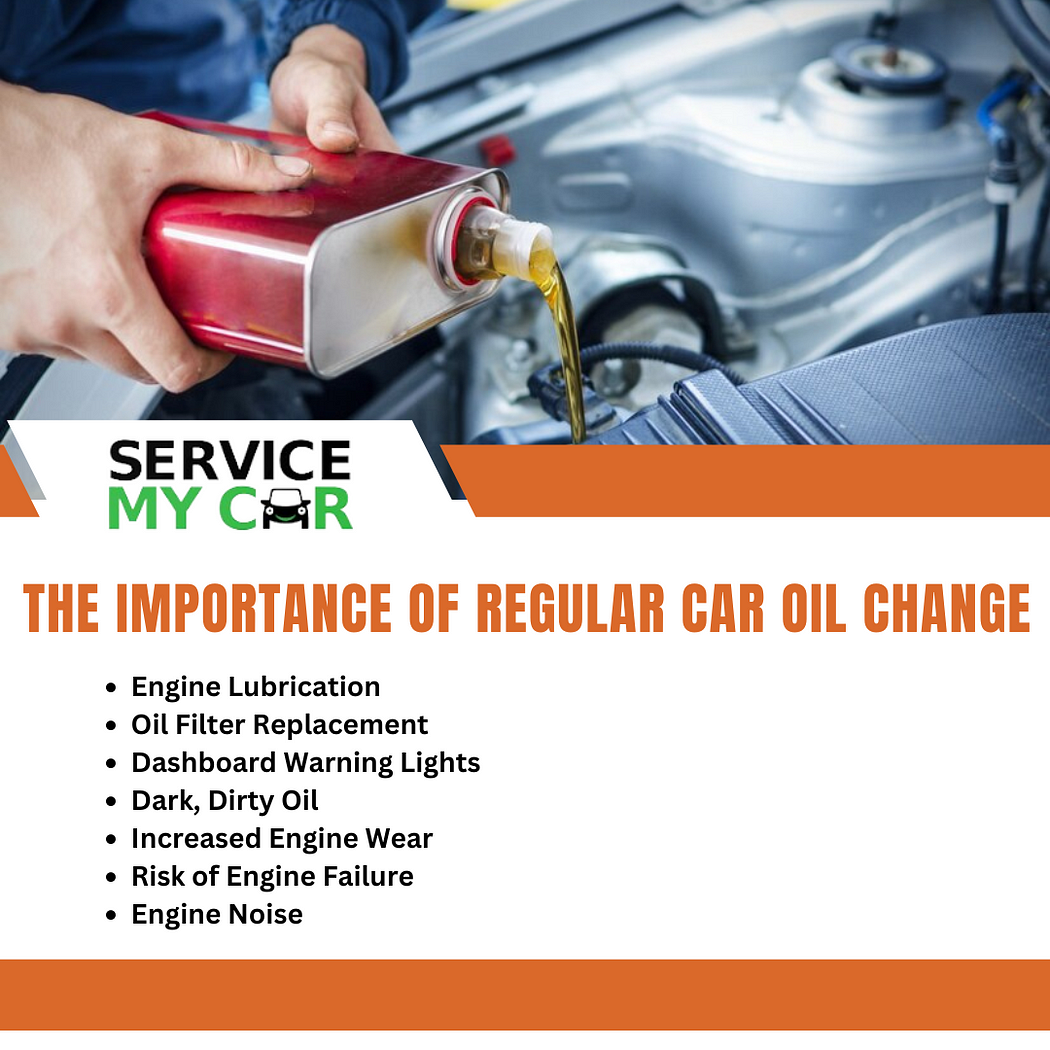
Maintaining a vehicle goes beyond the occasional wash and tire check; it involves a commitment to regular upkeep, with one of the most critical aspects being oil changes. Many drivers overlook this simple yet crucial maintenance task, unaware of its profound impact on their vehicle’s longevity and performance. Here’s why regular oil changes should be a non-negotiable part of your vehicle maintenance routine.
Engine Lubrication and Heat Management

At the heart of every car engine lies a network of moving parts that operate at high speeds and temperatures. Engine oil plays a pivotal role in keeping these components lubricated. As the oil circulates through the engine, it forms a protective layer that reduces friction between parts, minimizing wear and tear. Moreover, oil helps manage engine heat by carrying away heat from the combustion process, preventing overheating and potential damage.
Cleansing and Preventing Build-Up

Over time, engine oil accumulates dirt, debris, and other contaminants. This accumulation can turn the oil into a sludgy substance that compromises its ability to lubricate effectively. Regular oil changes ensure that your engine stays clean and free of harmful deposits, preserving its efficiency and performance.
Optimizing Engine Performance and Fuel Efficiency

Fresh oil contributes to optimal engine performance. It helps maintain the engine’s smooth operation, ensuring that all components work together seamlessly. A well-lubricated engine is also more fuel-efficient, as it experiences less resistance and operates more effectively. Neglecting oil changes can lead to decreased fuel efficiency over time, costing you more at the pump.
How Often Should You Change Your Oil?

The frequency of oil changes varies depending on several factors, including your vehicle’s make and model, driving habits, and environmental conditions. Most manufacturers recommend changing oil every 5,000 to 7,500 miles under normal driving conditions. However, this interval may need adjustment for severe driving conditions such as frequent short trips, towing heavy loads, or driving in extreme temperatures.
Signs Your Car Needs an Oil Change

Recognizing the signs that your car needs an oil change is crucial to preventing potential engine damage. Keep an eye out for:
Dashboard Warning Lights: The oil pressure or oil change indicator light illuminating on your dashboard.
Engine Noise: Unusual engine noises like knocking or ticking, which may indicate inadequate lubrication.
Dark, Dirty Oil: Checking your oil regularly and noticing dark or gritty oil suggests it’s time for a change.
Consequences of Delaying Oil Changes

Delaying or neglecting oil changes can lead to severe consequences, including:
Increased Engine Wear: Without proper lubrication, engine parts can wear out faster, potentially leading to costly repairs.
Decreased Performance: A lack of clean oil can hinder your engine’s performance, affecting acceleration and responsiveness.
Risk of Engine Failure: Over time, old and dirty oil can cause serious engine damage, leading to complete engine failure in extreme cases.
The Oil Change Process

When it comes time to change your oil, consider these steps:
Choosing the Right Oil: Consult your owner’s manual or a trusted mechanic to determine the best oil type (conventional, synthetic, or blend) for your vehicle.
Oil Filter Replacement: Always replace the oil filter when changing the oil to ensure optimal filtration and performance.
Professional vs. DIY: While changing your own oil can save money, professional service ensures proper disposal of old oil and adherence to manufacturer recommendations.
How Service My Car Assist You?
Looking to revive your vehicle's performance? Wondering if it's time for an engine rebuild? Service My Car offers expert solutions to breathe new life into your engine. With meticulous attention to detail, our skilled technicians diagnose and address any issues, providing a comprehensive engine rebuild service. Say goodbye to sluggish performance and hello to renewed power and efficiency. Trust Service My Car to revitalize your vehicle's heart with precision and care. Drive confidently with our top-notch engine rebuild services.
Conclusion
Regular oil changes are a fundamental aspect of vehicle maintenance that should not be overlooked. By prioritizing this simple task, you can prolong your engine’s life, maintain optimal performance, and save on potential repair costs down the road. Whether you rely on a professional service or choose to DIY, investing in regular oil changes is an investment in the longevity and reliability of your vehicle.

You’re offline. This is a read only version of the page.

